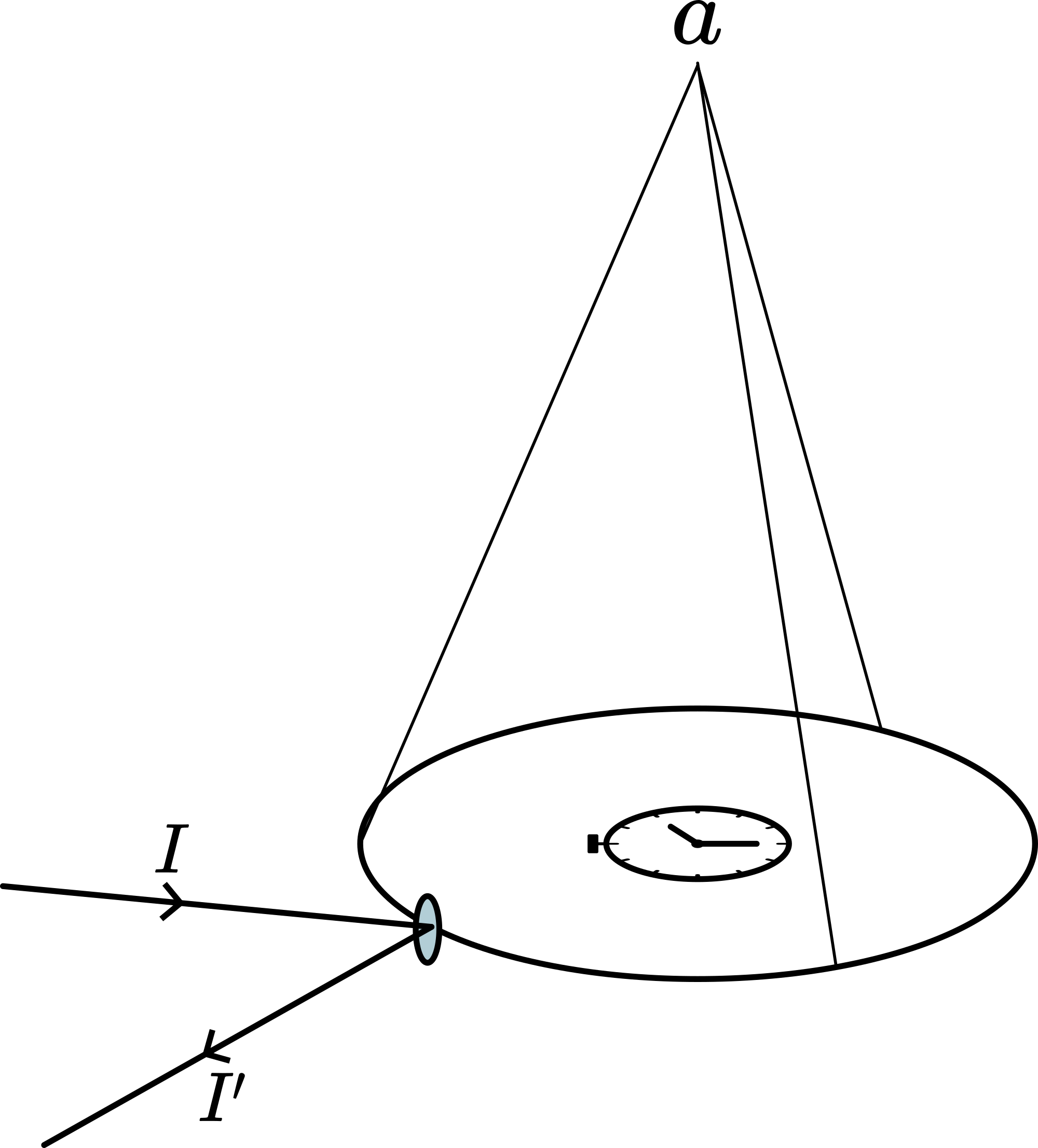17 Train and Track#
Aim#
To show: Action and Reaction, or: Stable equilibrium, or: Conservation of Angular Momentum. So this is a versatile assembly!
Subjects#
1H10 (Action and Reaction)
1J20 (Stable, Unstable and Neut. Equilibrium)
1Q40 (Conservation of Angular Momentum)
Diagram#

Fig. 243 .#
Equipment#
Electric toy locomotive.
Trailer, with mass.
Round electric toy-train track.
DC power supply.
Two switches, ON-OFF and TWO-WAY.
Table with adjustable tabletop.
Support material.
Presentation#
Preparation#
The track and toy train are mounted as shown in the Diagram. The track is levelled carefully. To do this, first the complete frame is mounted and fixed to the table as level as possible. When the complete set is brought into the lecture-hall, further levelling is performed by means of the adjustable tabletop only.
Presentation#
When power is switched on, the train runs along the track and the track moves into the opposite direction. When switching off, both train and track stop their movement immediately. (Using the two-way switch, the demonstration can also be shown when the train runs into the other direction.)
The train is running and by hand the rotation of the track is prevented (block it during a short while). The train is running around at a constant speed and in our frame of reference the track is at rest.
When the power is switched off, the train stops on the track and track-and-train will start rotating into the same direction as the train did, but at a lower speed.
While holding the train, the power is switched on. The track is rotating and in our frame of reference the train is at rest.
When the power is switched off, the track stops under the train and track-and-train will rotate together into the same direction as the track did before, but at a lower speed now.
The track (at rest) is given a small gradient and students are asked to predict what will happen now. (Switching on the power will make the track rotating and the train remains in the lowest position of the track.)
Explanation#
First: that both train and track move when power is switched on, shows that
Remarks: when there is action, there is also a resultant reaction.
Second: When there is no power switched on, the assembly is at rest and the total angular momentum equals zero. When the train starts going round there is an internal amount of angular momentum. Since externally no torque has been applied, total angular momentum should still be zero. This is so since the track rotates into the other direction.
When switching off the train looses his angular momentum. Since total angular momentum must be zero, also the track has to stop
When the train goes round and the track is at rest in our frame of reference, the total system has a certain amount of angular momentum. When the train stops, this amount should be conserved. (The train is not stopped by an external torque.) Conservation of angular momentum shows up in the rotation of the complete system now. (It has to move slower, because more mass is rotating now: the moment of inertia has increased.)
The same holds when the track goes round and the train is at rest in our frame of reference.
This is a demonstration of stable equilibrium, when the system has its lowest gravitational potential energy.
Remarks#
When doing presentation 1 the track will stop rotating after some time due to friction in its bearings. So make not run your toy train too long and so “spoil”
When the train rotates at a high speed, it may fall from the track due to centrifugal forces.
For demonstration 1 and 2 the track should be levelled carefully. Otherwise, even at a small gradient you will get demonstration 3 . (When the gradient is hidden it can be amusing to make a “professional” audience make the wrong prediction before the demonstration is shown.)
Sources#
Sutton, Richard Manliffe, Demonstration experiments in Physics, pag. 55
